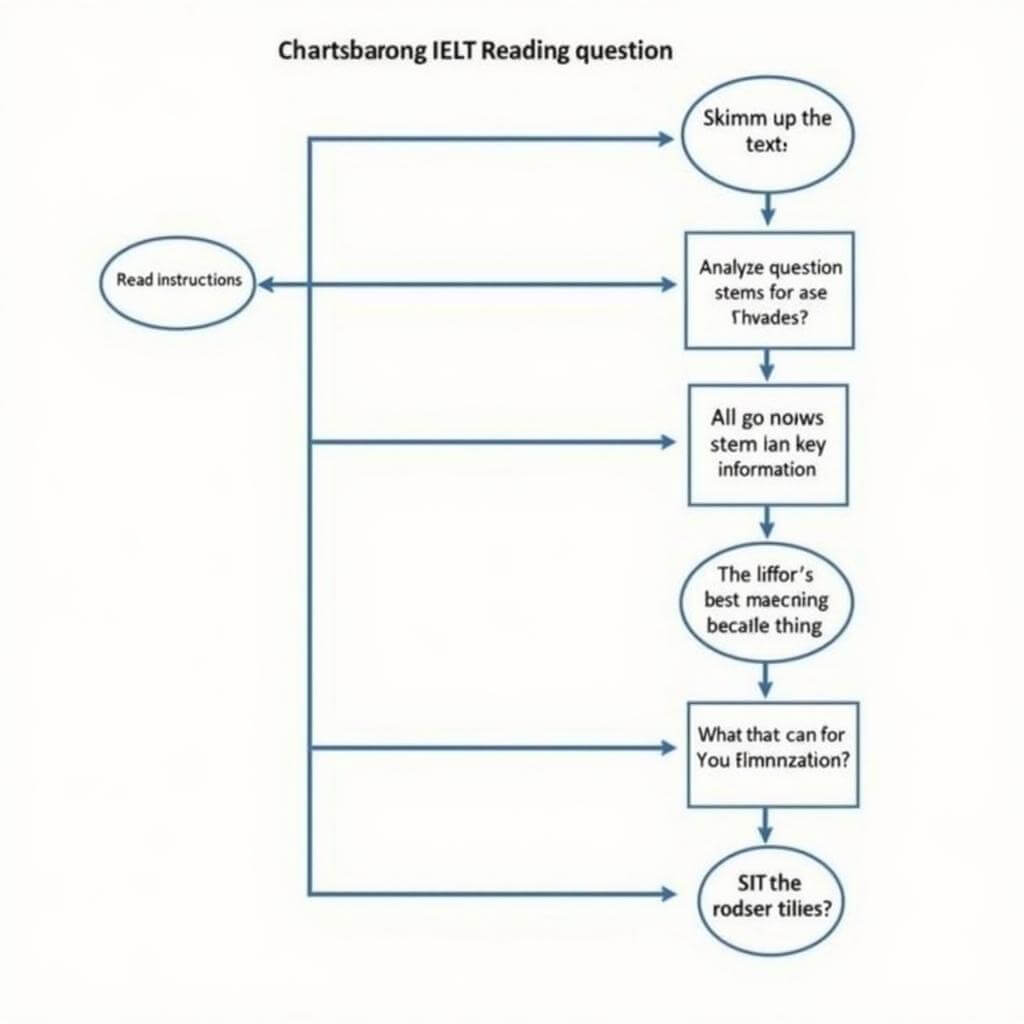IELTS Reading matching questions can be challenging, but with the right approach, you can significantly boost your score. This comprehensive guide will provide you with expert strategies to excel in this question type, helping you achieve your desired band score in the IELTS Reading module.
Understanding IELTS Reading Matching Questions
Matching questions require you to match a list of information (such as headings, statements, or summaries) with the correct paragraphs or sections of the text. These questions test your ability to identify main ideas, understand specific details, and make connections between different parts of the passage.
Types of Matching Questions
- Paragraph Headings
- Information Matching
- Sentence Completion
- Summary Completion
Key Strategies for Success
1. Develop Effective Skimming and Scanning Techniques
Improving skimming skills for IELTS reading is crucial for matching questions. Follow these steps:
- Quickly read the first and last sentences of each paragraph to grasp the main ideas.
- Look for keywords and topic sentences within paragraphs.
- Practice timed skimming exercises to improve your speed and accuracy.
Dr. Emma Thompson, an IELTS expert with 15 years of experience, advises: “Mastering the art of skimming can save you precious time in the exam, allowing you to focus on answering the questions accurately.”
2. Analyze the Question Stem Carefully
Before diving into the text, thoroughly examine the question stem:
- Identify key words and phrases
- Understand the specific information you need to find
- Look for any qualifying words (e.g., “always,” “never,” “sometimes”)
3. Use the Process of Elimination
When faced with multiple options, use the process of elimination:
- Start with the most obvious matches
- Cross out options that you’ve already used
- Narrow down your choices for the remaining questions
4. Pay Attention to Synonyms and Paraphrasing
IELTS often uses synonyms and paraphrasing to test your vocabulary knowledge. To tackle this:
- Expand your vocabulary by learning word families and collocations
- Practice identifying synonyms in context
- Look for rephrased ideas that convey the same meaning as the options
5. Manage Your Time Effectively
Time management is crucial in the IELTS Reading test. For matching questions:
- Allocate about 1 minute per question
- If you’re stuck on a particular match, move on and come back to it later
- Leave enough time to transfer your answers to the answer sheet
Advanced Techniques for Challenging Questions
1. Handle Multiple Opinions and Viewpoints
Handling reading passages with multiple opinions can be tricky. To navigate this:
- Identify different perspectives within the text
- Look for transition words that signal contrasting views (e.g., “however,” “on the other hand”)
- Pay attention to the author’s tone and attitude towards each viewpoint
2. Improve Accuracy in Paragraph Matching
Improving accuracy for paragraph matching requires practice and attention to detail:
- Focus on the overall theme of each paragraph
- Look for topic sentences that summarize the main idea
- Check if the matching option aligns with the paragraph’s purpose and content
3. Tackle Tricky Questions
How to tackle tricky questions in IELTS reading involves a strategic approach:
- Break down complex sentences into smaller, manageable parts
- Look for contextual clues that might not be immediately obvious
- Consider the broader implications of the information presented
Dr. James Parker, a renowned IELTS trainer, suggests: “When faced with a particularly challenging matching question, try to think like the examiner. What specific skill or understanding are they testing with this question?”

Common Pitfalls to Avoid
- Rushing through the questions without carefully reading the instructions
- Relying too heavily on background knowledge instead of the text
- Matching based on individual words rather than overall meaning
- Failing to double-check answers before moving on to the next section
Practice Makes Perfect
To improve your performance in IELTS Reading matching questions:
- Regularly practice with authentic IELTS materials
- Time yourself to simulate exam conditions
- Analyze your mistakes and identify patterns in your errors
- Gradually increase the difficulty of practice materials as you improve
Remember, consistency is key. As Sarah Lee, an IELTS coach with a 100% success rate for her students, puts it: “The secret to acing IELTS Reading matching questions isn’t just about strategies—it’s about consistent, focused practice that builds your confidence and skills over time.”
Conclusion
Mastering IELTS Reading matching questions is a crucial step towards achieving a high band score. By implementing these expert strategies, practicing regularly, and staying focused during the exam, you’ll be well-equipped to tackle even the most challenging matching questions. Remember to stay calm, manage your time wisely, and trust in your preparation. With dedication and the right approach, you can significantly improve your performance and reach your IELTS goals.
FAQs
-
How many matching questions are typically in an IELTS Reading test?
The number can vary, but you can expect to encounter 1-2 sets of matching questions per test, with each set containing 5-7 questions. -
Can I write on the question paper during the IELTS Reading test?
Yes, you can make notes and mark up the question paper. However, only answers transferred to the answer sheet will be scored. -
What if I can’t find a match for one of the options?
If you’re unsure about a match, make an educated guess. There’s no penalty for wrong answers, so it’s better to attempt all questions. -
How can I improve my vocabulary for IELTS Reading matching questions?
Read widely on various topics, create word lists with synonyms, and practice using new words in context to expand your vocabulary. -
Is it better to answer matching questions first or last in the IELTS Reading test?
This depends on your personal strategy. Some find it helpful to tackle matching questions early, while others prefer to build confidence with other question types first. Experiment during practice tests to determine what works best for you.